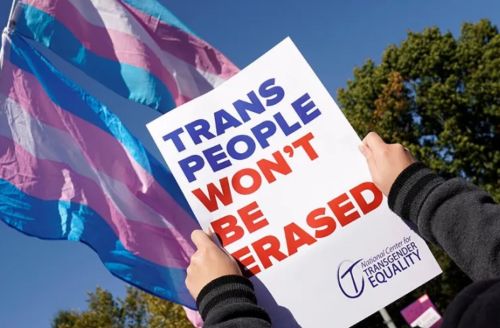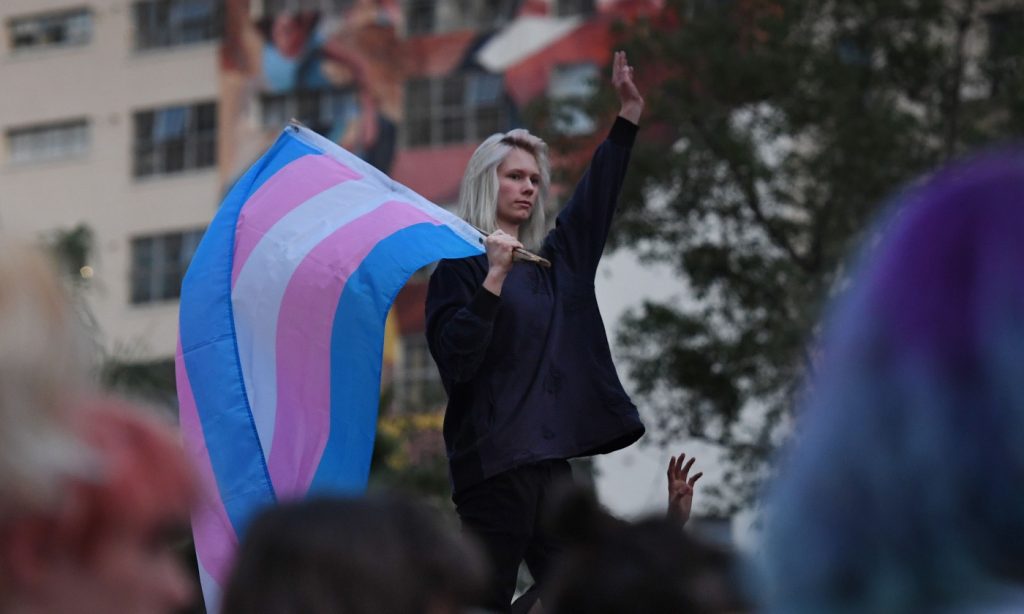

If unity is lost, the policy victories that remain could rest on fragile ground, preserved not by shared conviction but by the temporary expedience of political convenience.

By Matthew A. McIntosh
Public Historian
Brewminate
A Strategy with Historical Roots
Political strategies that divide a movement from within are not new. They have been used for centuries, from labor strikes undermined by factional splits to civil rights coalitions fractured by selective appeasement. The Trump administration’s approach to LGBTQ rights fits squarely within this tradition. While making occasional gestures toward gay and lesbian Americans, the administration has advanced a policy framework that singles out transgender people for restriction, creating a wedge inside what was once presented to the public as a unified LGBTQ movement.
This is not merely conjecture. The evidence is written into the text of recent executive orders and federal directives. These measures have removed gender identity from anti-discrimination policies, restricted access to gender-affirming care, barred transgender athletes from competing in accordance with their gender, and prohibited open service in the military for those whose gender does not match their sex assigned at birth. Each initiative isolates a smaller, more vulnerable group from the whole.
The Calculated Targeting of Transgender Rights
In the past two years, the policy map has shifted sharply against transgender people at the federal level. Executive Order 14187 eliminated federal funding for gender-affirming treatments for minors. Executive Order 14168 went further, requiring that all federal documentation recognize only male or female identities assigned at conception. These changes are not just symbolic; they have tangible effects on healthcare access, identity documentation, and public visibility.
Restrictions on sports participation, codified in Executive Order 14201, have gone beyond domestic school policy to affect international athletes seeking visas to compete in the United States. The military ban, reinstated under Executive Order 14183, has also been expanded to limit benefits for transgender veterans, creating a separate class of service members in the eyes of the federal government.
These moves have been defended as protecting fairness, safety, or tradition. Yet, when examined collectively, they point to a pattern: a political decision to focus public debate on transgender rights as a stand-in for the larger LGBTQ struggle, shifting cultural energy toward a more polarizing and less numerically represented segment of the community.
Dividing the “LGB” from the “TQ+”

Perhaps the most insidious element of this strategy is not simply the targeting of trans rights but the way it attempts to redraw the lines of LGBTQ solidarity. Administration allies have increasingly framed their opposition to transgender rights as compatible with acceptance of lesbian, gay, and bisexual identities. The subtext is clear: sexual orientation can be tolerated; gender identity remains up for debate.
This has not gone unnoticed. Certain conservative-leaning gay advocacy groups have embraced a rhetoric of separation, distinguishing between “sexuality issues” and what they call “gender ideology.” By doing so, they echo arguments that were once used against them, repurposing them to exclude others from the protections they themselves fought to secure.
Public opinion data reveals the risk in this wedge. While Gallup’s most recent survey finds 9.3 percent of Americans identify as LGBTQ, with bisexuality the most common identity, the majority of that group is not transgender. If policy debates continue to frame trans rights as optional or negotiable within the broader movement, the political cost of defending them could be calculated away by some legislators and even some advocacy groups.
Political Expediency and the Optics of Tolerance
Donald Trump’s political messaging has, at times, nodded toward acceptance of gays and lesbians. He has highlighted personal relationships with openly gay figures and cited his administration’s lack of direct restrictions on same-sex marriage as evidence of tolerance. Yet these gestures operate in a political environment where marriage equality is settled law and opposition to it carries significant electoral risk. Supporting that status quo while attacking transgender rights allows him to claim moderation even as the policy arc moves sharply toward exclusion.
This selective tolerance functions as a political shield. It allows the administration to argue that it is not broadly anti-LGBTQ, reframing criticism as an overreaction or mischaracterization. The result is a fractured conversation in which the public is invited to debate only the most controversial and least understood aspects of gender identity, rather than the broader implications for civil rights.
Cultural Consequences Beyond Policy
What begins in legislation and executive orders often filters into culture. The focus on transgender issues has intensified public scrutiny, with trans individuals facing increased harassment, violence, and economic marginalization. The deliberate choice to place them at the center of a political storm does not only erode their rights; it alters the social climate in which they live.
There is also the question of long-term impact on the LGBTQ movement itself. Divisions fostered for political gain have a way of lasting beyond the administration that created them. If mistrust between LGB and trans communities becomes normalized, it could take years to rebuild the kind of solidarity that was forged in earlier fights for equality.
Conclusion: A Movement at a Crossroads
The Trump administration’s approach to LGBTQ rights has been marked by a tactical narrowing of its opposition, focusing on transgender people in ways that sow division within the movement and among the public. It is a strategy rooted in political calculation, drawing on historical precedent, and it leaves the community facing a question it has confronted before: whether solidarity will hold under pressure, or whether selective acceptance will erode the collective gains of past decades. If unity is lost, the policy victories that remain could rest on fragile ground, preserved not by shared conviction but by the temporary expedience of political convenience. The consequences of such a shift would extend far beyond the current administration, shaping the future of LGBTQ rights in the United States for years to come.
Originally published by Brewminate, 08.12.2025, under the terms of a Creative Commons Attribution-NonCommercial-NoDerivatives 4.0 International license.


